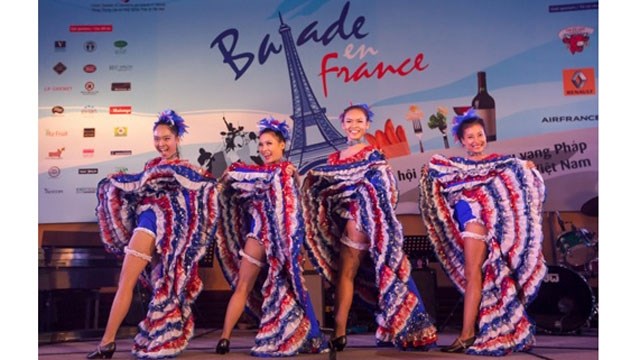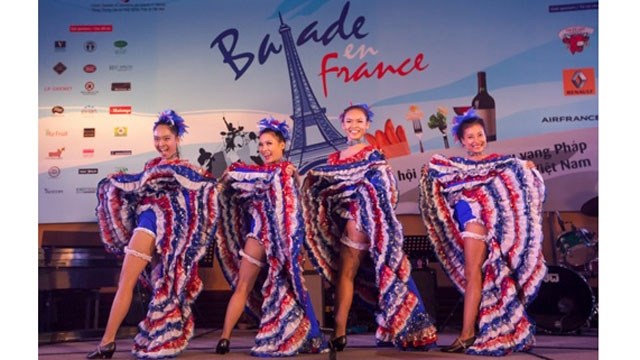
The "Un Mois En France” (One Month in France) programme will take place in Hanoi and Ho Chi Minh City from November 1 to December 12.

Illustrative photo (Source:
VNA)
French Ambassador to
Vietnam Bertrand Lortholary revealed the schedule at a press conference on the
event held in Hanoi on October 25.
The diplomat said France is an honourable guest at the Vietnam Foodexpo 2017,
where French firms will showcase the country’s strong food sectors and discuss
food safety with their Vietnamese peers from November 15-18.
He said food is a major export sector of France with average annual export
revenue of over 9 billion EUR.
The "Un Mois En France” would contribute to trade between France and Vietnam as
the Vietnam – EU free trade agreement is going to take effect.
Aside the expo, the programme also features a series of culinary events and
trade promotions, with French products displayed at 39 supermarkets in Hanoi
and Ho Chi Minh City, including Big C, Auchan, Aeon, Metro, Annam Gourmet,
Giant, Satra and Aeon Fivimart.
Booths will be set up at the supermarkets to introduce to customers products
made from France as well as to demonstrate French cooking and food
tastings.
"Balade en France", the annual French food and wine festival, will be
held from November 10-12 at Hotel Equatorial in HCM City’s District 5.
The eight edition of the event will feature traditional French dishes, desserts
and wine as well as music shows by French singers, musicians and dancers.
Forty booths of 20 businesses will serve dishes and sell French products at the
three-night event. The event will welcome 3,000 visitors.
Beaujolais Nouveau, one of France’s most favourable festivals, will be held at
the French Consul General Residence on November 16 and the garden of French
Embassy in Hanoi on November 18.
Eight French fine-dining restaurants will serve Beaujolais Nouveau red wine and
French dishes.
Source: VNA
With an increasingly vibrant and widespread emulation movement aimed at building cultured residential areas and cultured families, Yen Thuy District has been making steady progress toward improving both the material and spiritual well-being of its people, while fostering a civilized, prosperous, beautiful, and progressive community.
Once lacking recreational spaces and community facilities, Residential Group 2 in Quynh Lam Ward (Hoa Binh City) has recently received attention for the construction of a new, spacious, and fully equipped cultural house. The project followed the model of state support combined with public contributions in both labor and funding.
The "All people unite to build cultural life" movement, which has been effectively integrated with Kim Boi district’s socio-economic development goals, is fostering a lively spirit of emulation across local residential areas, hamlets, villages, public agencies, and enterprises. In addition, through the initiative, traditional cultural values are being preserved and promoted, while community solidarity and mutual support in poverty reduction and economic development are being strengthened.
A working delegation of the Hoa Binh provincial People’s Committee led by its Permanent Vice Chairman Nguyen Van Toan on June 11 inspected the progress of a project to build the Mo Muong Cultural Heritage Conservation Space linked to tourism services in Hop Phong commune, Cao Phong district.
Born and growing in the heroic land of Muong Dong, Dinh Thi Kieu Dung, a resident in Bo town of Kim Boi district, in her childhood was nurtured by the sweet lullabies of her grandmother and mother. These melodies deeply imprinted on her soul, becoming an inseparable part of her love for her ethnic group's culture. For over 20 years, this love for her hometown has driven Dung to research, collect, and pass down the cultural values of the Muong people to future generations.
In the final days of May, the Ethnic Art Troupe of Hoa Binh Province organized performances to serve the people in remote, mountainous, and particularly disadvantaged areas within the province. These were not just ordinary artistic shows, but they were the meaningful journeys aimed at spreading cultural values, enhancing the spiritual life of the people and contributing to the preservation of ethnic minority cultural identities.



